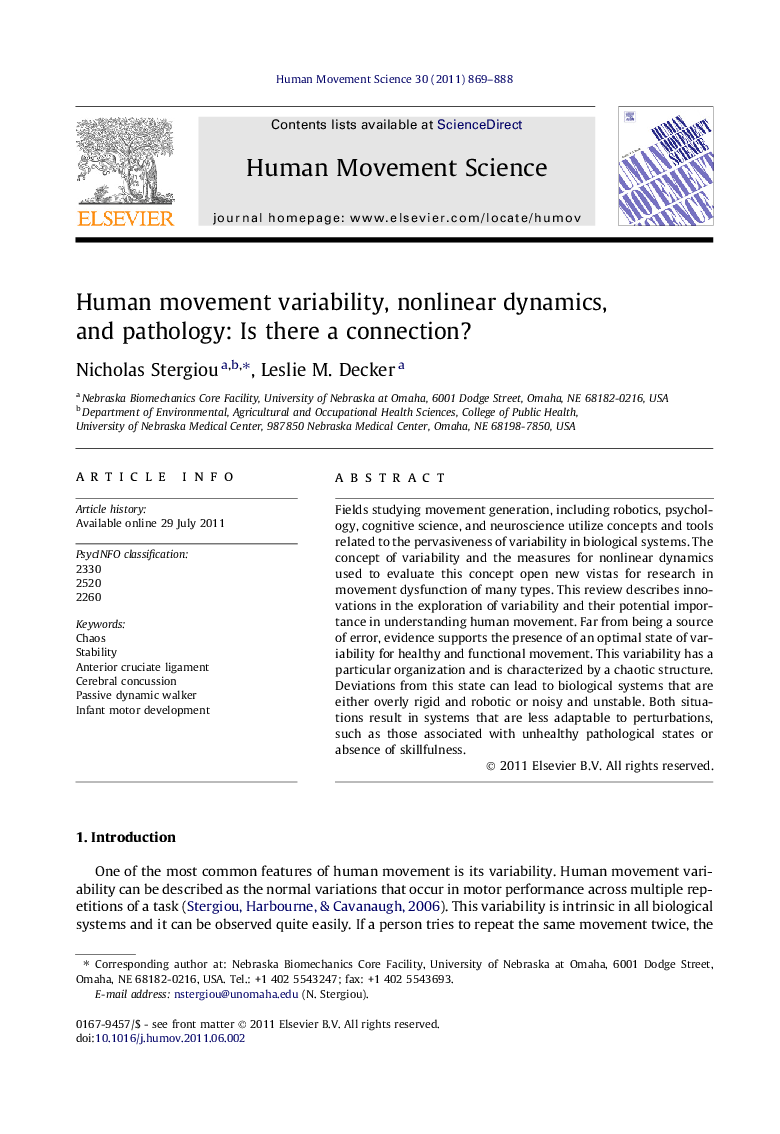| کد مقاله | کد نشریه | سال انتشار | مقاله انگلیسی | نسخه تمام متن |
|---|---|---|---|---|
| 928606 | 922376 | 2011 | 20 صفحه PDF | دانلود رایگان |

Fields studying movement generation, including robotics, psychology, cognitive science, and neuroscience utilize concepts and tools related to the pervasiveness of variability in biological systems. The concept of variability and the measures for nonlinear dynamics used to evaluate this concept open new vistas for research in movement dysfunction of many types. This review describes innovations in the exploration of variability and their potential importance in understanding human movement. Far from being a source of error, evidence supports the presence of an optimal state of variability for healthy and functional movement. This variability has a particular organization and is characterized by a chaotic structure. Deviations from this state can lead to biological systems that are either overly rigid and robotic or noisy and unstable. Both situations result in systems that are less adaptable to perturbations, such as those associated with unhealthy pathological states or absence of skillfulness.
► Exploration of variability using measures for nonlinear dynamics opens new vistas for research and treatment for movement dysfunction.
► Chaos could be a powerful component of the locomotive system and its structure can be controlled by the nervous system.
► An optimal state of variability that exhibits chaos is important for health and functional movement.
► Loss of this optimal state of variability renders the system more predictable and rigid.
► Increases beyond optimal variability render the system more noisy and unpredictable.
Journal: Human Movement Science - Volume 30, Issue 5, October 2011, Pages 869–888